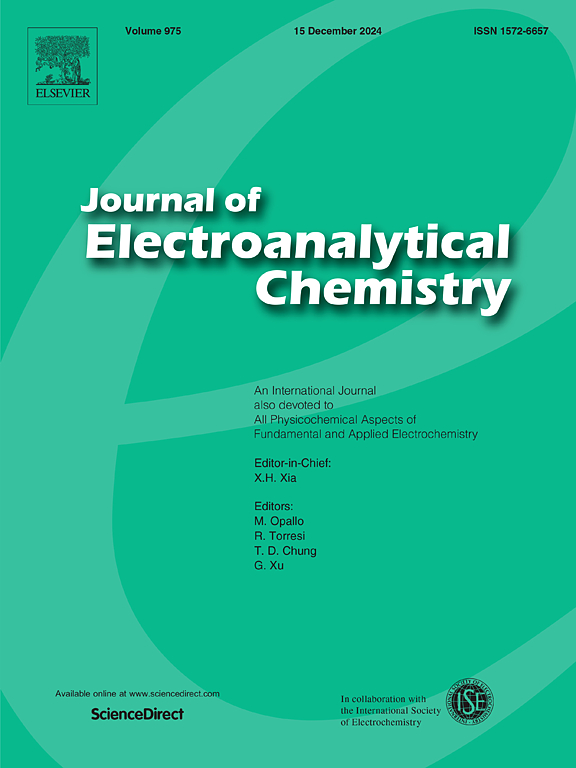Effect of capillary action and gravitational force on resistive pulse sensing with nanopipettes
IF 4.1
3区 化学
Q1 CHEMISTRY, ANALYTICAL
引用次数: 0
Abstract
In Resistive Pulse Sensing, nanoparticles dispersed in solution are individually detected and characterized during their translocation through a narrow pore or channel. Electrophoretic force and fluid flow can be precisely adjusted to direct nanoparticles toward the sensing zone. The impact of various factors on nanoparticle translocation dynamics, including solution ionic strength, pH, applied potential difference, and pipette tip geometry, has been extensively investigated. In this work, we focus on the role of pipette filling height, an experimental parameter often overlooked despite its significant impact on the overall pressure gradient and the resulting flow through the pipette tip. We used a solution of NaCl 150 mM plus 0.1 % v/v Triton X-100 at pH 7.2, a pipette with radius of approximately 200 nm and a voltage of ± 200 mV. Our findings reveal that the pipette filling height emerges as the critical factor dictating the translocation direction of negatively charged 160 nm PMMA particles and surpassing the combined effect of electrokinetic forces. Ultimately, our results indicate that considering the pipette filling level could enhance the accurate interpretation of experimental results, offering an additional parameter for fine-tuning nanoparticles dynamics, thus providing a valuable tool to researchers in this field.
毛细作用和重力对纳米吸头电阻式脉冲传感的影响
在电阻脉冲传感技术中,分散在溶液中的纳米粒子在通过狭窄的孔隙或通道时会被单独检测和表征。电泳力和流体流动可以精确调节,以引导纳米粒子向传感区移动。各种因素(包括溶液离子强度、pH 值、外加电位差和吸头几何形状)对纳米粒子迁移动力学的影响已得到广泛研究。在这项工作中,我们重点研究了移液管填充高度的作用,尽管这一实验参数对整体压力梯度和由此产生的流经移液管尖端的流量有重大影响,但却经常被忽视。我们使用的溶液是 pH 值为 7.2 的 150 mM NaCl 加 0.1 % v/v Triton X-100,移液管半径约为 200 nm,电压为 ± 200 mV。我们的研究结果表明,移液管填充高度是决定带负电的 160 纳米 PMMA 粒子转移方向的关键因素,其作用力超过了电动力学的综合作用力。最终,我们的研究结果表明,考虑移液管填充高度可以提高实验结果的准确性,为微调纳米粒子动力学提供额外的参数,从而为该领域的研究人员提供有价值的工具。
本文章由计算机程序翻译,如有差异,请以英文原文为准。
求助全文
约1分钟内获得全文
求助全文
来源期刊
CiteScore
7.80
自引率
6.70%
发文量
912
审稿时长
2.4 months
期刊介绍:
The Journal of Electroanalytical Chemistry is the foremost international journal devoted to the interdisciplinary subject of electrochemistry in all its aspects, theoretical as well as applied.
Electrochemistry is a wide ranging area that is in a state of continuous evolution. Rather than compiling a long list of topics covered by the Journal, the editors would like to draw particular attention to the key issues of novelty, topicality and quality. Papers should present new and interesting electrochemical science in a way that is accessible to the reader. The presentation and discussion should be at a level that is consistent with the international status of the Journal. Reports describing the application of well-established techniques to problems that are essentially technical will not be accepted. Similarly, papers that report observations but fail to provide adequate interpretation will be rejected by the Editors. Papers dealing with technical electrochemistry should be submitted to other specialist journals unless the authors can show that their work provides substantially new insights into electrochemical processes.

 求助内容:
求助内容: 应助结果提醒方式:
应助结果提醒方式:


